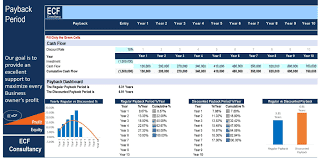DCF Modeling – Discounted Cash Flow Financial Model Templates
Discounted cash flow (DCF) method is one of the most used valuation methods to determine the value of a company or any cash flowing asset. Normally, DCF modeling is an add-on to an existing, working financial model to calculate the net present value by discounting the projected cash flows. There are three important elements that you need to consider when calculating the DCF value.
• Free Cash Flow to Firm (projected cash flows)
• Weighted Average Cost of Capital (discount rate)
• Time period used for valuation
The main concept of the DCF Modeling is to consider the time value of money. As you already know, as time passes by, the value of money constantly changes. Basically, what used to be less, might be more in the future and vice versa. It will be helpful in calculating what could be expected in the future such as potential investment opportunities and other interests.
Basically, DCF modeling can help conduct estimations such as the following:
• Estimation of business life expectancy
• Estimation of the future income flows that a business can/will generate during its life expectancy
• Estimation of the discount rate in order to calculate the present value of the estimated income flows
Though DCF modeling may sound a simple enough of a task, you would still need the required know-how as to ensure that the model is according to the state of the economy, trends, and other factors that could affect the variables in the model. To get a better understanding of how to build a DCF Model, you can take a look at eFinancialModels. There, you’ll be able to acquire and download industry-specific DCF model templates which you can use as a reference once you build your very own DCF valuation model.
If you are interested in the calculation to derive the value using the DCF method as well as knowing the several approaches in valuation, you can read more here: Common Valuation Approaches & DCF Modeling.
• Free Cash Flow to Firm (projected cash flows)
• Weighted Average Cost of Capital (discount rate)
• Time period used for valuation
The main concept of the DCF Modeling is to consider the time value of money. As you already know, as time passes by, the value of money constantly changes. Basically, what used to be less, might be more in the future and vice versa. It will be helpful in calculating what could be expected in the future such as potential investment opportunities and other interests.
Basically, DCF modeling can help conduct estimations such as the following:
• Estimation of business life expectancy
• Estimation of the future income flows that a business can/will generate during its life expectancy
• Estimation of the discount rate in order to calculate the present value of the estimated income flows
Though DCF modeling may sound a simple enough of a task, you would still need the required know-how as to ensure that the model is according to the state of the economy, trends, and other factors that could affect the variables in the model. To get a better understanding of how to build a DCF Model, you can take a look at eFinancialModels. There, you’ll be able to acquire and download industry-specific DCF model templates which you can use as a reference once you build your very own DCF valuation model.
If you are interested in the calculation to derive the value using the DCF method as well as knowing the several approaches in valuation, you can read more here: Common Valuation Approaches & DCF Modeling.



Comments
Post a Comment